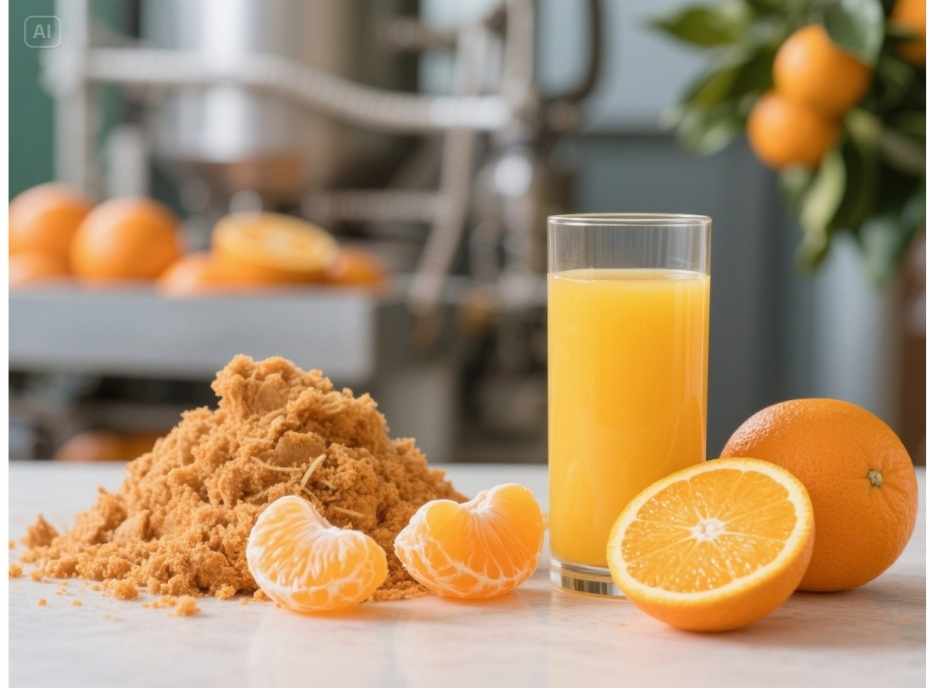When you think about breakfast, what’s the first thing that comes to mind? It’s a tall, refreshing glass of orange juice for many people. Packed with vitamins and bursting with flavour, orange juice is a go-to for a healthy start to the day. But a divisive element lurks in every carton on the shelf: pulp. Love it or hate it, there’s no denying that orange juice with pulp is distinct. But why does it matter? And does pulp offer more than just an interesting texture?
Here, we explore why orange juice with pulp deserves more love, its benefits, and how it stands against its pulp-free counterpart.
What is Orange Juice with Pulp?

Put orange juice with pulp, which contains the naturally fibrous strands from the walls of the orange fruit segments. These strands are left intact during juicing, giving the juice a slightly thicker texture and richer taste. Pulp doesn’t just add texture to your juice; it also carries extra nutrients often removed in pulp-free varieties. But is it worth choosing? Let’s explore further.
Why the Pulp Debate Matters
Orange juice drinkers split into two camps on this issue—with pulp or without? Those who shy away from pulp often point to its slightly gritty texture. On the other hand, fans love the authenticity and “freshly squeezed” vibe it brings. Beyond taste, though, the choice can affect your beverage’s nutritional value.
Benefits of Choosing Orange Juice with Pulp
Drinking orange juice with pulp isn’t just a matter of preference. Real benefits come with keeping that fibrous goodness in your glass.
1. Higher Fiber Content

Fibre is one of the most significant advantages pulp brings to the table. While orange juice is famously rich in vitamin C, it loses much of the natural fibre in whole oranges during processing. Pulp minimizes this loss, providing a modest but valuable fibre boost.
Why is fibre important? It promotes healthy digestion, regulates blood sugar levels, and keeps you feeling fuller longer. While the fibre in orange juice may not replace eating an orange, it’s still a healthier choice than pulp-free juice.
2. Better Nutrient Retention
Some studies suggest that orange juice with pulp retains more nutrients, including antioxidants and plant compounds like flavonoids, than its pulp-free counterpart. These compounds are believed to play a role in reducing inflammation, lowering blood pressure, and supporting heart health.
Pulp-free juices often undergo extensive processing, which can strip away some beneficial nutrients. By keeping the pulp, you’re closer to experiencing the natural goodness of the fruit itself.
3. Authentic Flavor and Texture
There’s a reason pulp believers swear by its inclusion. It enhances the flavour and offers a richer, more enjoyable mouthfeel. If you’ve ever had freshly squeezed orange juice at a café or farmers’ market, you likely noticed that the natural pulp elevates the drinking experience. It simply feels fresher and more wholesome.
How to Incorporate Orange Juice with Pulp in Your Day

Still unsure about making the switch to orange juice with pulp? Please don’t limit yourself to drinking it straight. Here are some creative ways to include it in your daily routine:
1. Enhance Smoothies
Add orange juice with pulp to your smoothies for an easy way to boost both flavour and fibre. The pulp blends seamlessly with fruits and vegetables and complements ingredients like bananas, strawberries, or kale.
2. Use it in Salad Dressings
Whisking orange juice with olive oil, honey, and mustard can create a zesty salad dressing that takes your greens to the next level. The pulp adds an extra layer of texture and depth.
3. Marinate Proteins
Marinate chicken, pork, or tofu in orange juice with pulp alongside garlic, soy sauce, and herbs. The natural acidity tenderizes the protein, while the pulp leaves a subtle citrus zest behind.
4. Bake with Pulp for a Flavor Twist
Use orange juice with pulp instead of water in desserts like cakes, muffins, or pancakes. It adds flavour and a hint of tanginess that cuts through the sweetness.
Busting the Myths Around Pulp
Some common misconceptions often lead people to avoid orange juice with pulp. Here’s the truth:
- Myth 1: Pulp makes the juice less healthy.
Fact: Actually, pulp preserves more fibre and nutrients, making it the healthier option.
- Myth 2: Pulp adds too many calories.
Fact: The calorie difference between orange juice with pulp and without pulp is negligible. The nutritional benefits certainly outweigh any concern over minor calorie changes.
- Myth 3: Pulp tastes bitter.
Fact: The bitterness depends more on the overall juicing process and type of oranges used, not the presence of pulp.
Making the Switch to Pulp

Start small if you’ve always gone for pulp-free orange juice but are considering a change. Many brands now offer “some pulp” options, giving you a middle ground that’s less overwhelming than “extra pulp” varieties. Gradually ease into pulpier juices and see how it grows on you.
Why Orange Juice with Pulp Deserves A Spot in Your Cart
Orange juice with pulp offers more than just a textured drinking experience. Its superior nutrient retention, added fibre, and authentic flavour make it a more intelligent and tastier choice. Whether you’re a health enthusiast, a foodie, or someone looking to elevate their breakfast game, orange juice with pulp checks all the boxes.
Next time you’re grocery shopping, look at the orange juice aisle and consider the benefits of keeping things pulpy. You might find it refreshing in more ways than one.



















